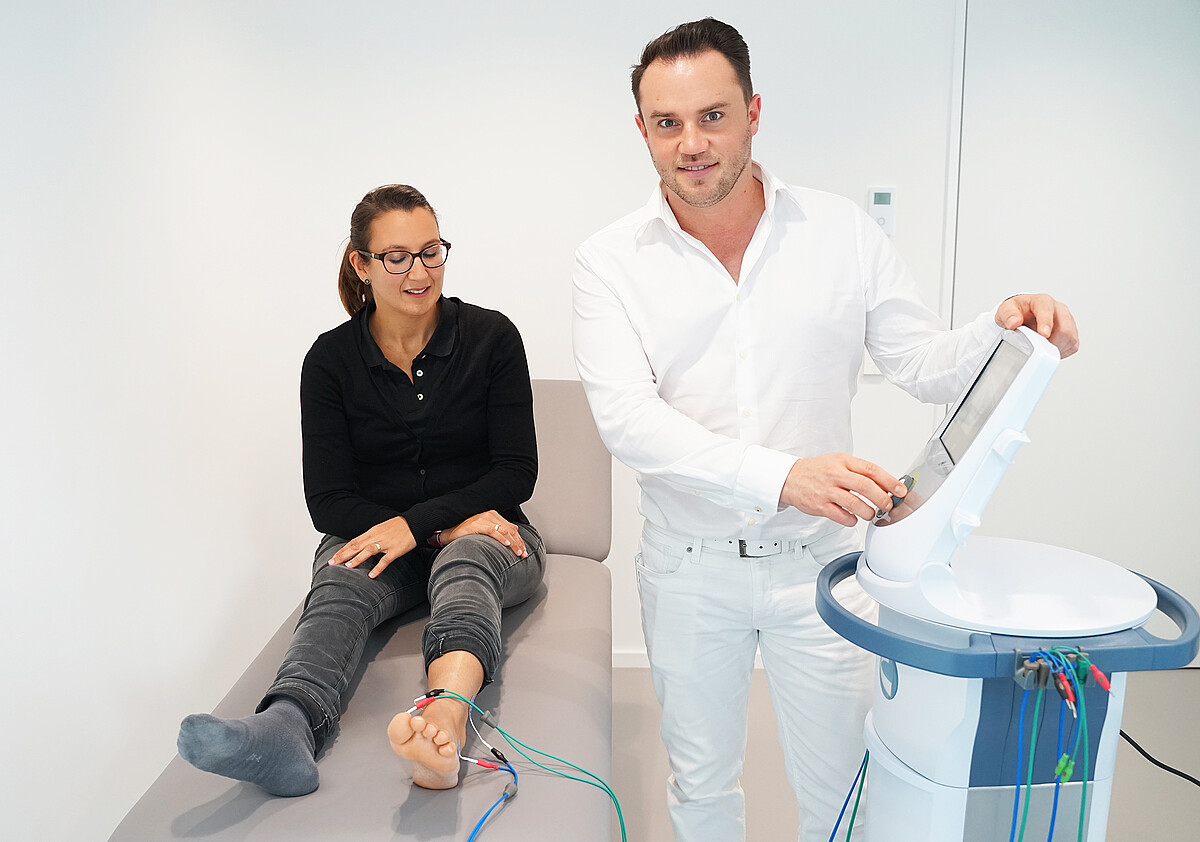Electromyography (EMG)

Exciting news about electrical muscle tension
Electromyography (EMG) can determine the electrical activity of a muscle. Based on the respective reaction of the muscle, we can determine if a certain disease is present. Surface electrodes are painlessly placed on the body surface. Using this diagnostic procedure, electrical currents that arise during contraction (muscle contraction) of a certain muscle group can be derived and visualized.
In a lateral comparison, measurements are done each time without active muscle contraction (resting tone), during muscle tension without movement (isometric muscle contraction), and during tension of the musculature with movements in the associated joint (in dynamic muscle activity). The information obtained here about the precise muscle activity patterns provides important information about the muscle activity in the area of the spine or an associated joint. In this way, weakened or tense muscle parts can be recorded in detail. In the further course of treatment, it also becomes possible to document and control therapeutic measures for the musculature and/or joints with subsequent reactions of the associated muscle group.
Your benefits:
Biofeedback therapy as part of electromyography also allows the patient to independently exercise in front of the screen. After surgeries or in the case of injuries, the muscle tone can thus be understood and harmonic muscle balance can be developed.
Areas of application: